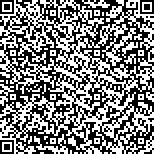Abstract:Based on mineralization features as the metallogenic structures, the orebody and wall rock alterations, the distribution of mineral constituents, the metallogenic temperature-pressure: indicators, the growth of mineral crystals, the concentration of ore solutions and the variations in isotopes, this paper deals with the migration direction of ore solutions. Ore-forming structure is a prerequisite for ore-formation in that it provides space for the migration and precipitation of ore-bearing fluids. The largest open part along the fault of the Tashan hydrothermal deposit coincides with the distribution of the orebody, both stretching in the dislocation direction along the fault. Therefore, under high temperature and high pressure the ore-bearing fluids probably migrated upward along the direction of structural dislocation and then precipitated to form rich orebodies. The geochemical behavior, mineral assemblage and sequence of crystallization of elements in orebodies reflect the migration of ore-bearing fluids in the process of mineralization. For the Dayu deposit the isopleths of such ratios as W/Sn, Pb/Zn and V-Sn/Cu-Pb-Zn show a similar character, i. e., the peak axial line is inclined to the west, implying that the ore-bearing fluids moved upward along the peak axial line. One important approach to the study of migration of ore-bearing fluids is to find out the pressure and temperature variations during mineralization, because in this process the ore-bearing fluids migrate from high to low-pressure segments, accompanied by the decrease of temperatures. In the Dayu ore field, an isotherm diagram drawn on a vertical section shows strikingly the existence of a high temperature area in the middle with its axis inclined to the west and a gradual decrease of temperature on both sides. This indicates that the ore-bearing fluids first ascended in this direction, followed by the formation of wolframife at a higher temperature. The budding and growth of mineral crystals often depend on the supply of the ore-forming materials, as reflected in such aspects as the asymmetry of crystals, the variation in inner growth rings, the incompleteness of crystal growth and the orientation of parallel axial intergrowth. The study of concentration fluctuations of ore solution sheds light on the problem of the migration direction of ore-bearing fluids. For example, in an Sn-polymetallic ore field in Guangxi, the metallogenic temperatures vary in order of 700一400—300一140—120℃ in outward succession and the variations in salinity are from>26.3wt‰ to 4wt‰, which coincides with the metallogenic zoning as well as the bulk migration direction of ore solutions. The variations in isotope abundance seem to be related to both the migration direction of ore-bearing liquids and the sequence of ore deposition. The average δS34 values of sulfides for a porphyry copper deposit in Jiangxi are 1.34‰ within the intrusive body, 2.67‰ at the contact zone, and from 2.82% to 4.2 9% outwards, accompanied accordingly by the decrease in the ore-forming temperature in order of 360一300—270一170℃from the interior of the intrusive mass outward. This also reflects the migration direction of ore solutions. The results obtained indicate that a comparatively correct solution to this problem may be found by means of an integrated investigation using a variety of methods. A study of this problem enables uS to further understand metallogenic mechanism, ore zonation, ore enrichment regularity and ore distribution tendency, thus having great significance in mineral exploration, especially in prediction of orebodies at depth.
文章编号:
中图分类号:
文献标志码:
引用文本:
曾庆丰.1985.矿液流向的研究[J].矿床地质,4(1):75~83,10.1985.A study of the migration direction of ore-bearing fluids[J].Mineral Deposits4(1):75~83,10
图/表

